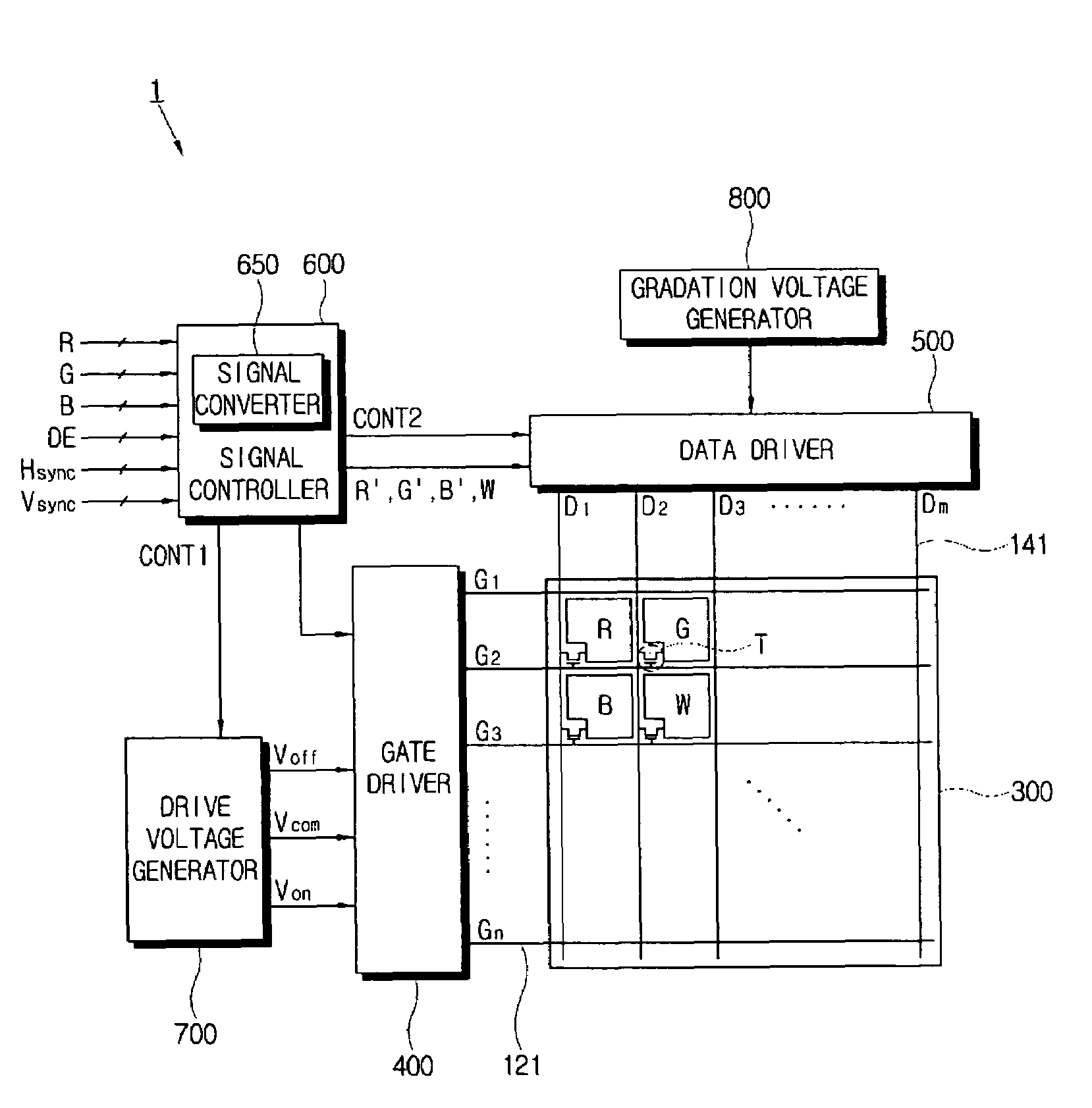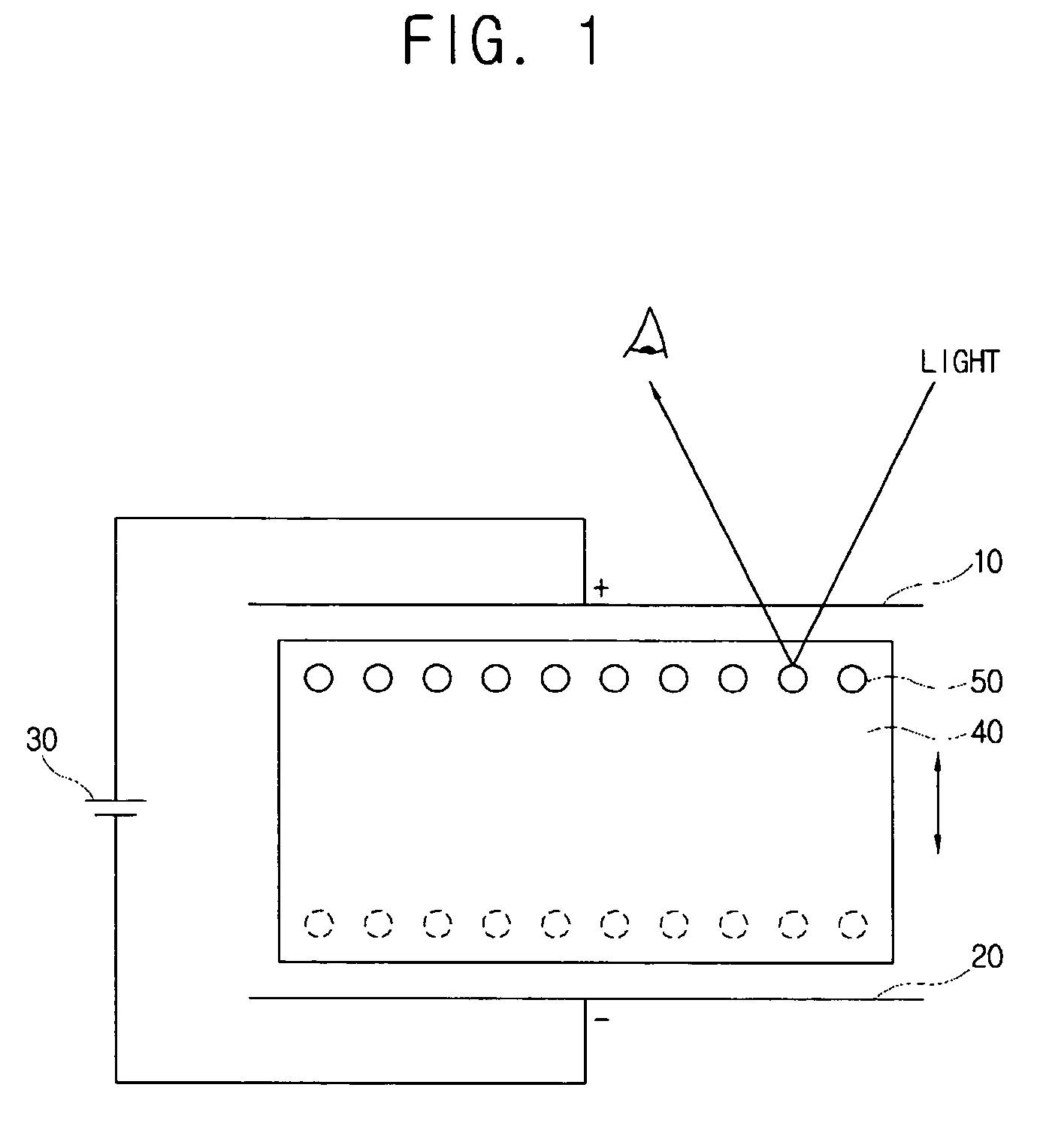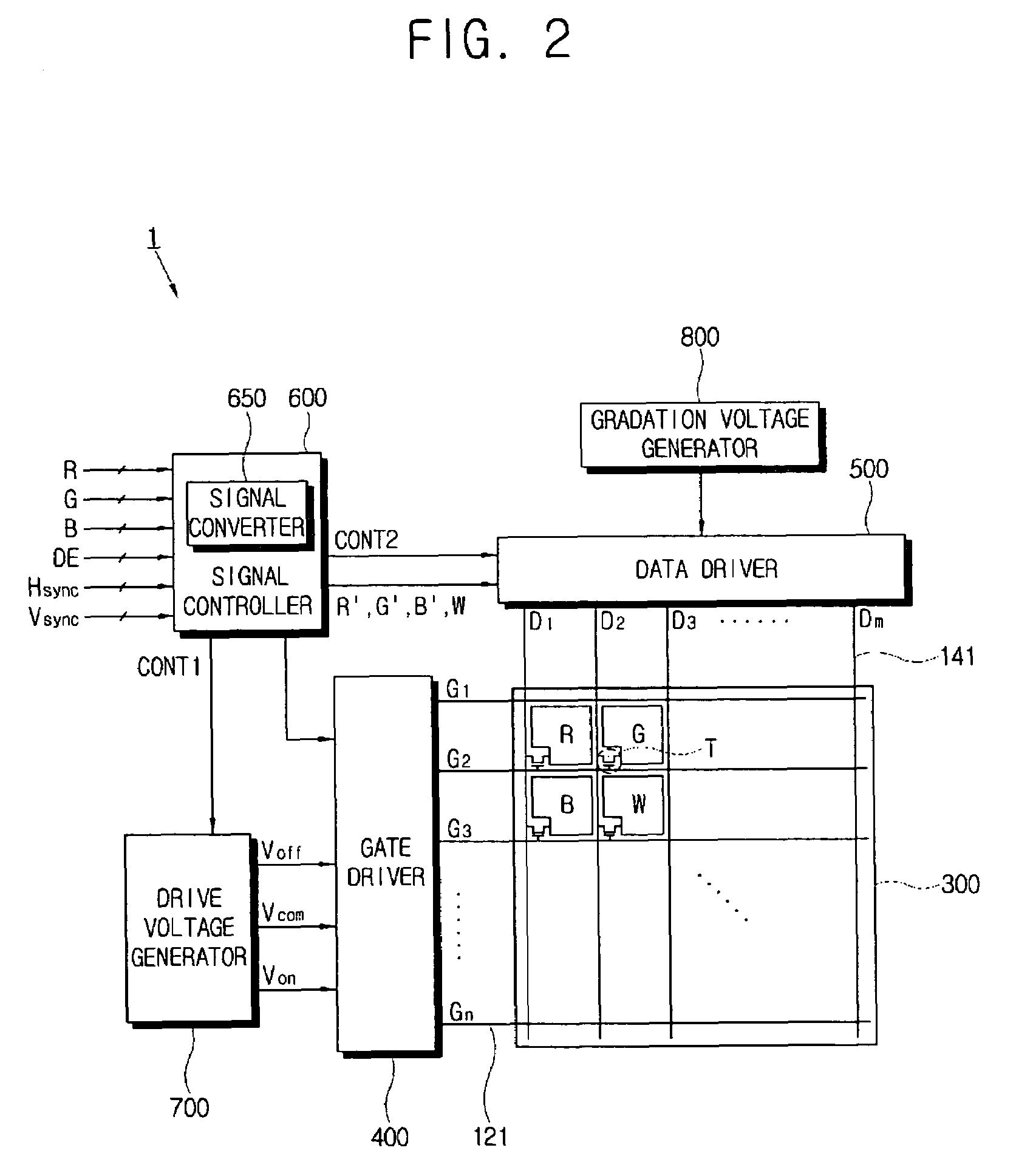Electrophoretic display device with improved reflective luminance
a display device and display device technology, applied in static indicating devices, optics, instruments, etc., can solve the problem that epd devices sometimes experience the problem of low reflective luminance, and achieve the effect of improving reflective luminan
- Summary
- Abstract
- Description
- Claims
- Application Information
AI Technical Summary
Benefits of technology
Problems solved by technology
Method used
Image
Examples
first embodiment
[0020]Hereinafter, preferred embodiments will be described in detail with reference to the accompanying drawings. In the embodiments, like elements are denoted by like reference numerals. Elements that are referred to in the descriptions for different embodiments will be explained only in the first embodiment to minimize redundancy. In the drawings, the thickness and size of layers, films, and regions are exaggerated for clarity. It should be noted that, when an element such as a layer, film, region, or substrate is referred to as being “on” another element, it can be directly positioned on another element or intervening elements may be present.
[0021]FIG. 1 is a schematic view showing the driving principle of an electrophoretic display device according to an embodiment of the invention.
[0022]As shown in FIG. 1, the electrophoretic display (EPD) device according to an embodiment of the invention includes a pair of electrodes 10 and 20 for forming an electric field. One of the electro...
third embodiment
[0072]FIG. 8 shows a pixel arrangement in the electrophoretic display panel according to the In this embodiment, four sub-pixels 170a, 170b, 170c and 170d that constitute one pixel 170 do not have the same area. For example, in the exemplary embodiment, the areas of the blue and white sub-pixels 170c and 170d are smaller than those of the red and green sub-pixels 170a and 170b. In other embodiments (not shown), the areas of the blue and white sub-pixels 170c and 170d may be larger than those of the red and green sub-pixels 170a and 170b.
fourth embodiment
[0073]FIG. 9 shows a pixel arrangement in the electrophoretic display panel according to the In this embodiment, six sub-pixels 170a1, 170a2, 170b, 170c1, 170c2 and 170d constitute one pixel 170. That is, one pixel 170 is constituted of two red sub-pixels 170a1 and 170a2, two blue sub-pixels 170c1 and 170c2, one green sub-pixel 170b, and one white sub-pixel 170d. In the embodiment shown, where the sub-pixels are arranged in a 3×2 matrix, the pixel 170 has a rectangular shape, not a square shape.
PUM
| Property | Measurement | Unit |
|---|---|---|
| reflectivity | aaaaa | aaaaa |
| dielectric constant | aaaaa | aaaaa |
| colors | aaaaa | aaaaa |
Abstract
Description
Claims
Application Information
 Login to View More
Login to View More - R&D
- Intellectual Property
- Life Sciences
- Materials
- Tech Scout
- Unparalleled Data Quality
- Higher Quality Content
- 60% Fewer Hallucinations
Browse by: Latest US Patents, China's latest patents, Technical Efficacy Thesaurus, Application Domain, Technology Topic, Popular Technical Reports.
© 2025 PatSnap. All rights reserved.Legal|Privacy policy|Modern Slavery Act Transparency Statement|Sitemap|About US| Contact US: help@patsnap.com



